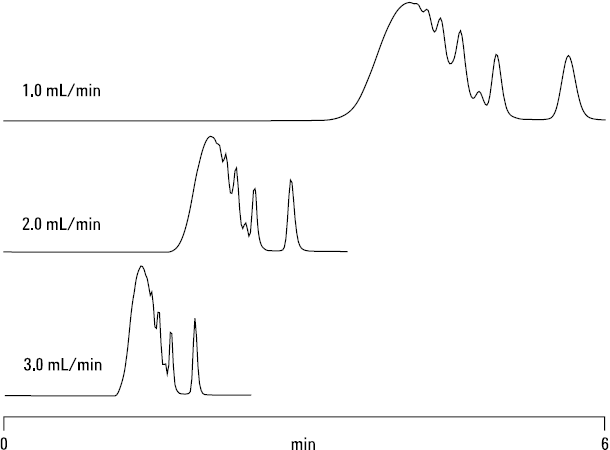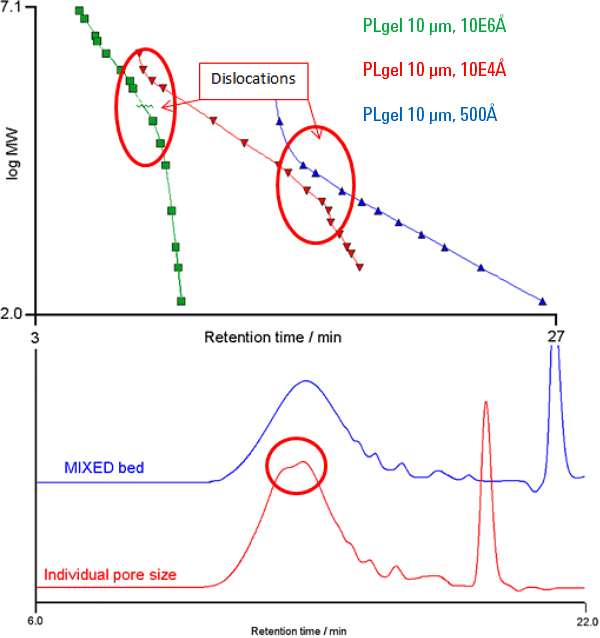Access Agilent eNewsletter, September 2014
>> Update My Profile | Subscribe to Access Agilent | Article Directory
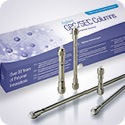
Tips, tools, and techniques for better GPC performance
By Stephen Luke
Agilent GPC Product Manager
GPC/SEC (gel permeation chromatography/size exclusion chromatography) is a well-established technique widely used for the characterization and separation of all types of polymer. However, it requires careful matching of column and sample to deliver the best results. In this article we discuss some of the common problems analysts can face, and provide tips and tools to quickly solve issues of resolution, speed, peak shape, and reproducibility.
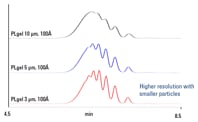 Enlarge
Enlarge
Figure 1. An analysis of polystyrene 580 using Agilent PLgel GPC columns shows how smaller particles deliver higher resolution.
Better resolution with high efficiency GPC/SEC columns
Let’s begin with resolution issues. Perhaps you are using inefficient columns packed with large diameter particles, or low-resolution columns with a low pore volume, or columns with the wrong molecular weight range?
The solution could be to use high efficiency GPC/SEC columns packed with small diameter particles, with a linear molecular weight range appropriate for your samples, as shown in Figure 1.
An alternative approach is to use high pore volume GPC/SEC columns packed with “Multipore” particles, with a near-linear molecular weight range appropriate for your samples. The Agilent OligoPore is one such column. It is filled with 6-µm packing material, but due to a very large pore volume OligoPore gives resolution similar to an Agilent PLgel 3 µm column. OligoPore is very resilient to extra-column dispersion because of its larger particle size.
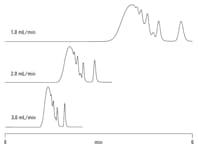 Enlarge
Enlarge
Figure 2. Agilent PL Rapide columns reduce analysis times while maintaining excellent solvent compatibility and mechanical stability.
High linear velocity for faster analysis times
When suffering from long run times, are you using multiple columns in series, a low linear velocity, or long columns?
You can decrease analysis time by using high-resolution columns with shorter lengths and wider bores. This allows you to use high linear velocity to greatly reduce run time and still maintain acceptable resolution over a wide molecular weight range without dislocations. Agilent PL Rapide columns reduce analysis times while maintaining the excellent solvent compatibility and mechanical stability of all GPC columns from Agilent. The speed increase is captured in Figure 2.
Another way of reducing run times is to use high-resolution columns packed with “Multipore” particles, which require fewer columns in the series. A column from the Agilent PlusPore range is a good choice because it maintains good resolution over a wide molecular weight range without dislocations.
Improved peak shape and reproducibility
Are you getting shear degradation of your polymer sample? Poor peak shapes can also result from interactions between your polymer sample and column packing material.
One way of improving peak shape is to use GPC/SEC columns packed with particles made of a highly cross-linked material. This lets you use mobile phases that will prevent interactions between the polymer sample and the column packing.
An example of such interactions can be seen with the use of dimethylformamide (DMF), where PS/DVB columns retain polystyrene standards in DMF due to hydrophobic adsorption resulting in a non-size exclusion separation.
Improved peak shape can also be achieved using GPC/SEC columns packed with particles made of an intermediate polarity that will, with polar organic mobile phases, prevent interactions between the polymer sample and the column packing. The highly polar -OH groups of polar compounds in the sample interact with styrene/divinyl benzene particles giving poor peak shape. Optimized Agilent PolarGel is a better option for these samples because it gives improved peak shape and resolution of polar samples.
If you are using aqueous SEC, then do not lose sight of the complex nature of water-soluble polymers. It is often necessary to modify the eluent to avoid sample-to-column interactions with aqueous polymers. The Agilent PL aquagel-OH column has excellent stability, so you can change the eluent to suit the polymer.
 Enlarge
Enlarge
Figure 3. Agilent MIXED GPC/SEC columns have a wide linear range that prevents dislocations, as shown by this overlay of individual calibration curves.
Greater confidence in reproducibility
Finally, when it comes to reproducibility, are you using columns with molecular weight dislocations, or is incorrect calibration to blame?
In this case, it is important to use GPC/SEC columns with wide linear molecular weight ranges appropriate for your samples. These columns will eliminate dislocations and improve reproducibility. Mixed bed columns are the best choice here because they have a wide linear range that prevents dislocations; whereas individual pore size columns can exhibit dislocations where the molecular weight resolution ranges overlap (Figure 3).
Choice of calibration standards can also affect reproducibility. Agilent EasiCal and EasiVial pre-prepared standards that match your samples in terms of solvent compatibility and molecular weight range. They do not require any further handling and only need dilution, which improve the ease and reliability of calibration and thus improve reproducibility.
Agilent has GPC/SEC solutions for all polymers
Agilent has a comprehensive family of GPC/SEC columns, calibrants, and instruments for high performance separations based on molecular size in solution, with a complete portfolio for the analysis of synthetic and natural polymers, in organic and water-based solvents.
Explore Agilent GPC/SEC columns, standards, and instruments and see how they offer a clear advantage for the analysis of your polymers. This link also gives you free access to application notes, primers, and selection guides. What’s more, the Agilent Parts Finder tool will help you quickly locate components if you need parts and supplies. And, there’s also a new, handy, and informative GPC wall chart, Achieve more with the polymer analysis people, so order your free copy now.
>> Update My Profile | Subscribe to Access Agilent | Article Directory
Figure 1.
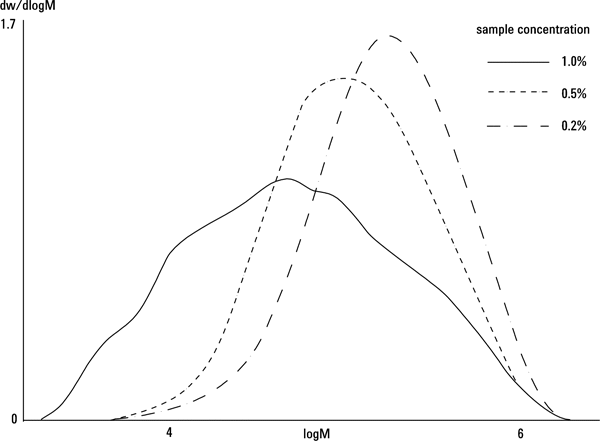
An analysis of polystyrene 580 using Agilent PLgel GPC columns shows how smaller particles deliver higher resolution (eluent THF, flow rate 1 mL/min, injection volume 20 µL, DRI detection).
